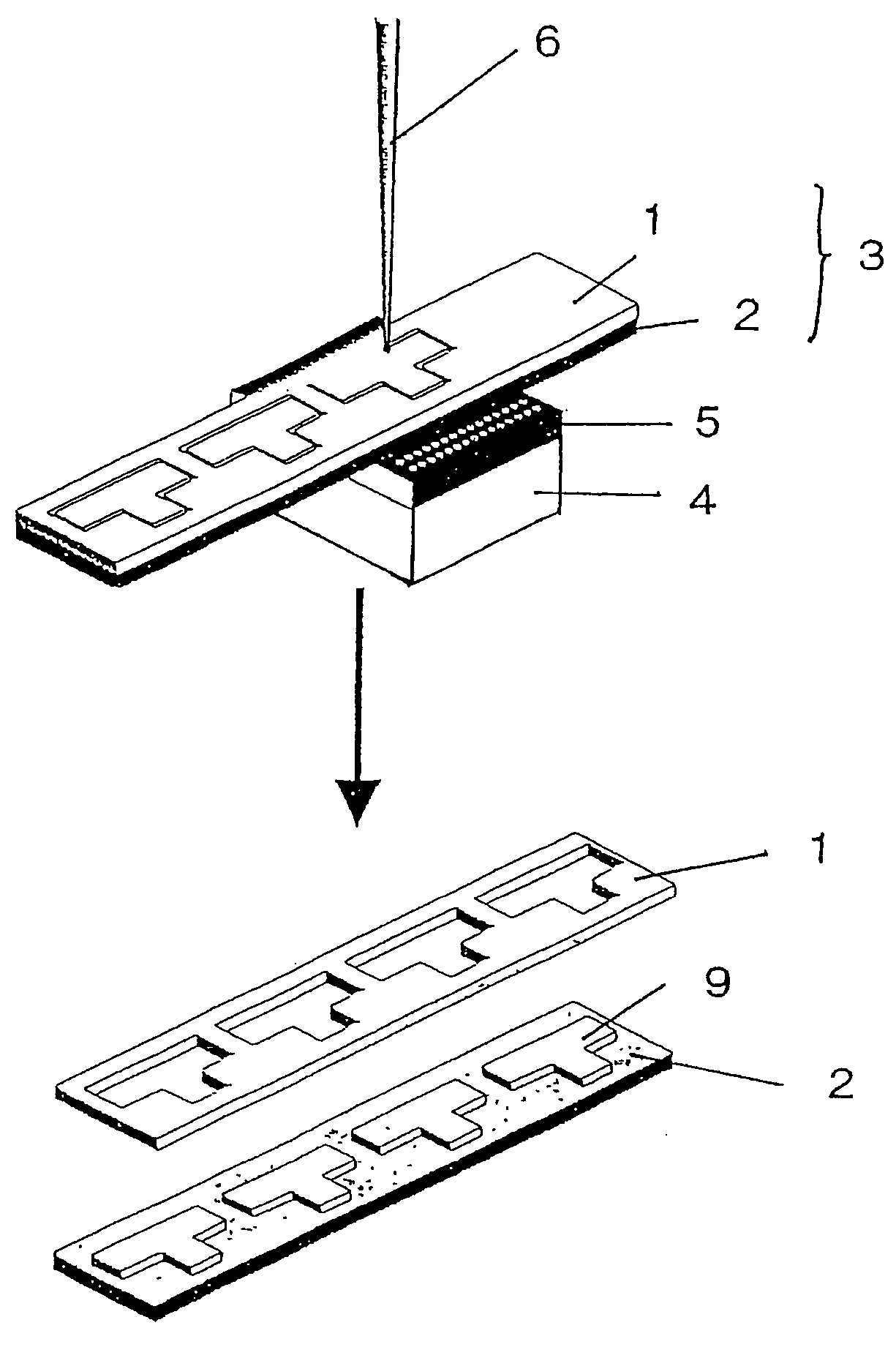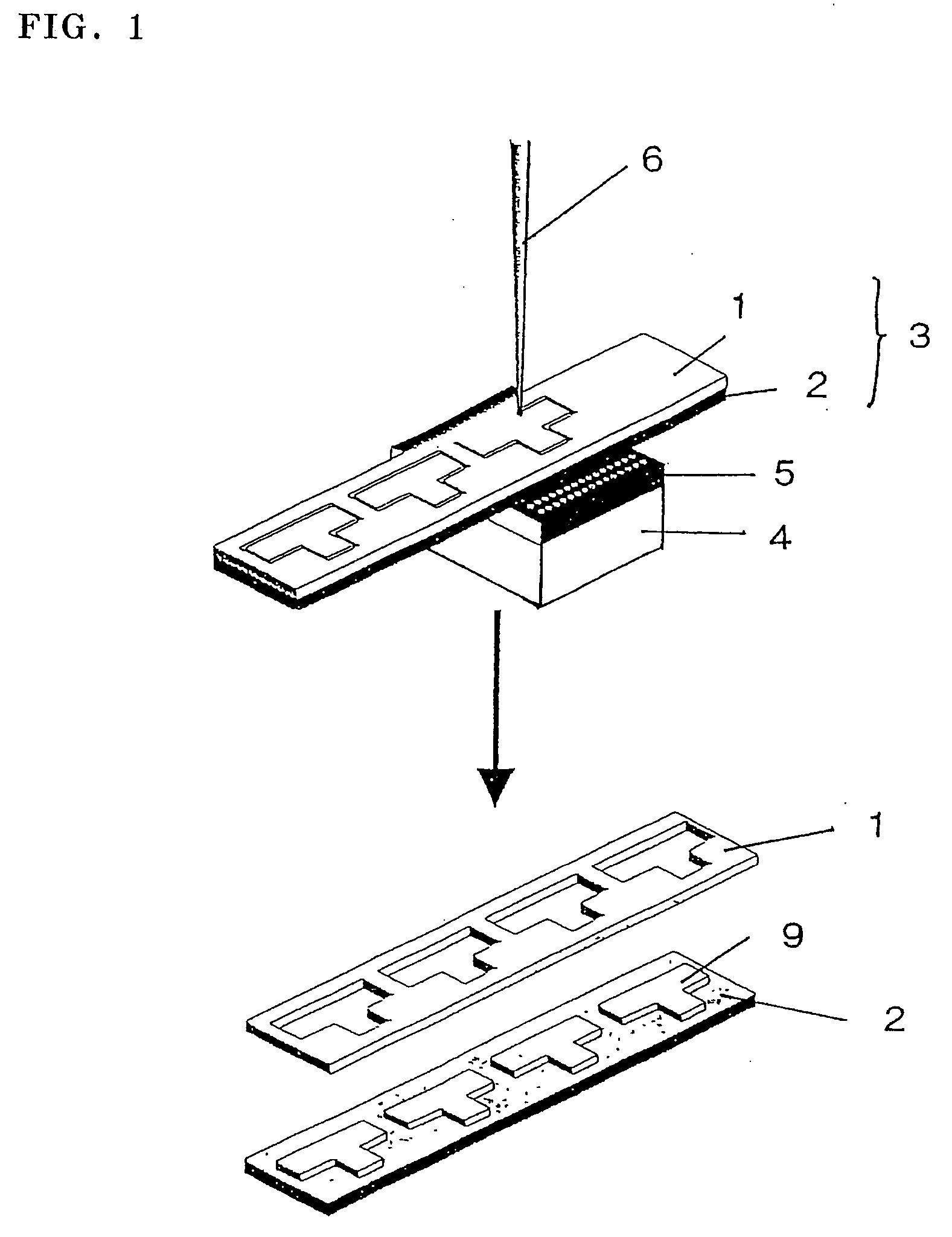Manufacturing method of laser processed parts and adhesive sheet for laser processing
a manufacturing method and laser processing technology, applied in metal-working equipment, electrical equipment, lamination, etc., can solve the problems of inability to meet the demand, difficulty in postprocessing removal of decomposition products, and inability to drill or die conventionally, etc., to achieve easy recovery of workpieces after processing, effective suppression of contamination of workpiece surfaces, and high speed
- Summary
- Abstract
- Description
- Claims
- Application Information
AI Technical Summary
Benefits of technology
Problems solved by technology
Method used
Image
Examples
example 1
[0082] Acrylic adhesive solution (1) was applied and dried on a base material (thickness 50 μm) made of ethylene-vinyl acetate copolymer, and an adhesive layer (thickness 10 μm) was formed, and an adhesive sheet for laser processing was obtained. Extinction coefficient of adhesive sheet was 8.6 cm−1.
[0083] Acrylic adhesive solution (1) was prepared in the following method. Acrylic adhesive solution (1) was prepared by adding 100 parts by weight of acrylic polymer of number-average molecular weight of 800,000 prepared by copolymerization of butyl acrylate / ethyl acrylate / 2-hydroxy ethyl acrylate / acrylic acid at ratio by weight of 60 / 40 / 4 / 1, 90 parts by weight of dipentaerythritol monohydroxy pentacrylate as photopolymerizable compound, 5 parts by weight of benzyl dimethyl ketal (Irgacure 651) as photopolymerization initiator, and 2 parts by weight of polyisocyanate type cross-linking agent (Coronate L manufactured by Nippon Polyurethane Co.) to toluene, and dissolving and mixing un...
example 2
[0089] Adhesive sheet for laser processing was manufactured in the same procedure as in example 1, except that base material of polymethyl methacrylate (thickness 100 μm) was used instead of ethylene-vinyl acetate copolymer. The extinction coefficient of adhesive sheet was 1.7 cm−1.
[0090] Using the adhesive sheet for laser processing, it was cut and processed in the same manner as in example 1, except that silicon wafer (thickness 75 μm) was used instead of polyurethane sheet as material to be processed. At this time, silicon wafer was cut off, but the base material of adhesive sheet was not processed at all. Ultraviolet ray was emitted to adhesive sheet, and adhesive layer was cured. The adhesive sheet was peeled off, and the laser processing peripheral area of adhesive sheet adhering surface (laser beam exit side) of silicon wafer was observed, but decomposition product (deposit) of base material and adsorption board was not observed.
[0091] As clear from the examples and compara...
PUM
| Property | Measurement | Unit |
|---|---|---|
| extinction coefficient | aaaaa | aaaaa |
| wavelength | aaaaa | aaaaa |
| wavelength | aaaaa | aaaaa |
Abstract
Description
Claims
Application Information
 Login to View More
Login to View More - R&D
- Intellectual Property
- Life Sciences
- Materials
- Tech Scout
- Unparalleled Data Quality
- Higher Quality Content
- 60% Fewer Hallucinations
Browse by: Latest US Patents, China's latest patents, Technical Efficacy Thesaurus, Application Domain, Technology Topic, Popular Technical Reports.
© 2025 PatSnap. All rights reserved.Legal|Privacy policy|Modern Slavery Act Transparency Statement|Sitemap|About US| Contact US: help@patsnap.com



